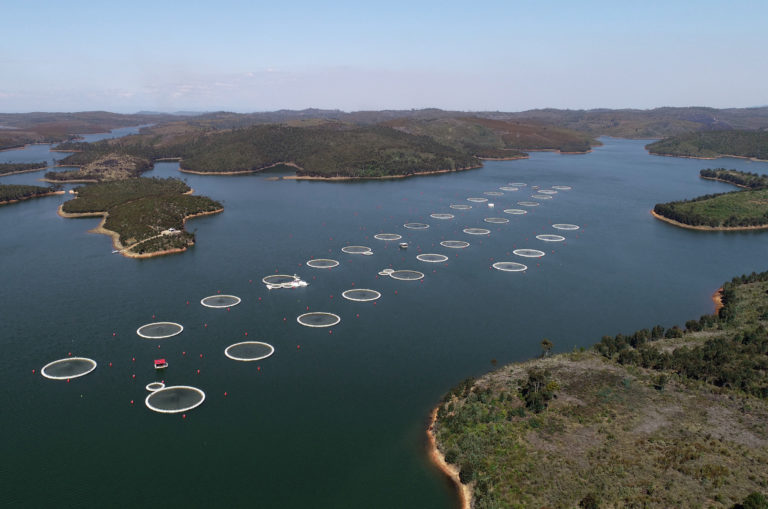The British video games industry is worth more than US$7.0 billion
Posted on
In The Tines London on September 7th, 2019, Simon Parkin analysed the British video games industry. He is the author of A Game of Birds and Wolves: The Secret Game that Won the War, which would be published in November 2019 by Sceptre. The analysis is published below.
When Brandon Beck and Marc Merrill, the founders of the video game company Riot Games, began planning its sprawling, multimillion-dollar campus in Los Angeles, they knew that it had to be luxurious. In the early days Beck, 36, and Merrill, 38, former room-mates at the University of California, were content to moonlight out of poky office rooms. However, when their first project, League of Legends, became one of the most widely played games in the world they had started to compete with Google, Facebook and the like to entice the brightest and best engineers in the world to work for them. At one point Beck offered to buy a Ferrari for a programmer whom he was desperate to recruit.
In 2015 the pair installed a vast cafeteria as the centrepiece of the new complex, with a battalion of chefs cooking cuisines from around the world for Riot’s 2,500-strong staff. An orange grove was planted near an outdoor chessboard with human-sized pieces. Rather than fell trees to deter pigeons from gathering around the campus, Riot hired a falconer to scare them off. No expense, in other words, was spared.
Such extravagance is possible in a business that, for the winners at least, can be unimaginably profitable. Recent figures show that the video-game market in the UK alone is worth £5.7 billion, more than the nation’s film and music industries combined. And while film production companies and record labels must regularly release new products, many games outfits, including Riot, concentrate on one, which they nurture and grow over many years – more like a social media company than a Hollywood studio.
Sustaining a game with millions of players requires a king’s ransom in funds, which often come from surprising sources. Riot, for instance – in which the Chinese conglomerate Tencent bought a majority stake for $231 million in 2011 – has made its fortune principally from the sale of “skins”. These are digital costumes that change the look of one’s character, much like paying a few pounds to dress your chess pieces in a different outfits. The outfits bestow no tactical advantage – they are purely cosmetic. And yet the sale of virtual fashions is, by all accounts, preposterously profitable. The digital fashion industry was pioneered by Riot Games, which made an estimated $1.6 billion in 2015, much of which came from the sale of virtual clothing.
Digital fashion is only one of the factors that make today’s games industry almost unrecognisable to anyone who grew up playing video games in the Eighties. Where games once came on temperamental cassettes or cartridges, most now are bought from digital retailers and stored on hard drives. Socialising was once done around wooden Pac-Man or Space Invaders cabinets in arcades that smelt of beer and truancy. Today players can go on month-long quests together, via the internet, without stepping foot in each other’s countries. While in the Eighties there were no international video-game tournaments, today young men and women join well-paid professional teams and live together in luxurious penthouse training dojos with dieticians and psychologists on hand to improve their chances of winning glittering prize pots.
Success came quickly to the video-game medium. In the early Seventies games spilt from the room-size university mainframe computers on which they were invented into bars and arcades, where they often made fast fortunes for their creators. However, the market crashed in 1983, a year after Atari paid $25 million for the rights to Steven Spielberg’s E.T.; the game was terrible and duly tanked – thousands of unsold copies were buried in the New Mexico desert.
The subsequent recovery of the business has been steady and stratospheric, propelled by advances such as 3D graphics, online play and virtual reality. One recent market report estimates that consumers will spend $138 billion on games in 2019. This success has been agitated by scores of video-game companies – and not just those based in North America. Analysts reckon that Grand Theft Auto V, which has been at the top of the charts since its release in September 2013, has earned more revenue than any book or film in history, with more than 95 million units sold, making $6 billion. GTA’s creators, Sam and Dan Houser, are the sons of Walter Houser, who co-owned Ronnie Scott’s jazz club, and the actress Geraldine Moffat. They grew up in London and their games are principally developed in Edinburgh.
The industry’s ever-expanding commercial clout has not, however, been matched by an upswing in cultural status. The stereotypical image of the lone teenage boy twiddling his thumbs in a darkened bedroom has persisted, while a readiness to blame violent crimes on the influence of games has focused attention on the baser aspects of a medium that is far richer in theme and substance than tabloid headlines suggest.
Yet this image may be shifting. Many who started playing games in their teenage years have continued to play into adulthood, and the rise of smartphone games has broadened the demographic of game-players; a 2017 report found that 32.4 million people in the UK play games on a regular basis, and that almost half of the players of mobile games are women. As game-players age, developers are increasingly investing in games that appeal to a more mature audience – not in terms of sex or violence, but via game experiences that explore more complex subject matter, such as grief and parenthood.
As the industry has evolved, a raft of hitherto unimagined and hugely lucrative positions have emerged. Tyler “Ninja” Blevins, who is 28 and has hair that is routinely dyed the colour of toxic waste, is in perhaps the most famous of these newly coined roles: video-game streamers broadcast their game-playing live to a global audience via live-streaming services such as Microsoft’s Mixer or the Amazon-owned Twitch.
The idea of watching someone else play video games seems counterintuitive, but in March last year, when Blevins played Fortnite with the musician Drake, the rapper Travis Scott and the Pittsburgh Steelers athlete JuJu Smith-Schuster, footage of the play session broke the record for the most-viewed live event yet staged on the internet. Close to 650,000 viewers concurrently logged on to watch the match.
Streaming is making stars of young men and women who, in a previous era, might have followed a career into traditional broadcasting. Alastair Aiken, the 25-year-old British streamer better known by his online alias Ali-A, is a hero to British teenagers, who know him principally not from his appearances as a presenter on CBBC, but for his YouTube videos playing Fortnite, which have been watched more than 959 million times, earning him up to a million dollars.
Top-flight streamers such as Blevins and Aiken often stream for six hours or more at a time and command influence over millions of young fans (Blevins has 4.7 million Twitter followers). Blevins, whose six-day honeymoon last August was his first holiday in eight years, reportedly earned almost $10 million in 2018 through streaming. He has little time to enjoy his earnings, however – his manager and wife recently told ESPN that the couple can’t leave their million-dollar home inside a gated community about an hour outside Chicago without enduring a Beatles-esque mobbing. Moreover, Blevins feels a pressing need to always be streaming. A weekend off could cost him tens of thousands of subscribers and there is an army of streamers – 2.2 million on Twitch, in fact – desperate to usurp his position at the top.
As game worlds have increased in fidelity thanks to technological progress, so the costs – human and financial – of game creation have risen sharply. GTA V cost an estimated $137 million to make, with an additional $128 million spent on marketing. Some of the top-level members of staff at Rockstar, the game’s publisher, worked 100 hours a week during the final weeks of its latest game’s development.
These figures represent a significant risk to financiers. Then there is the issue of discoverability. With 300,000 games for sale on Apple’s App Store, convincing anyone to play your game is as significant a challenge as building it. A host of angel investors are constantly on the lookout for what might be the next big thing, but in an industry in which fashions are fickle it can be difficult for them to know where to place their bets. Last year Jay Chi, who spent 11 years at the management consulting company McKinsey & Co, leading its global video-games practice, co-launched the Makers Fund with an initial pot of $180 million to invest in projects with the potential to become the next League of Legends or Fortnite. (The team is yet to announce the fund’s performance.)
As more developers seek to make their games permanent fixtures in players’ lives, detractors fear that the wider ecosystem suffers, crowding out those whose aspirations lean towards the artistic or political, rather than the commercial. Games such as That Dragon, Cancer, an autobiographical game created by a mother and father that looks at what it is like to live with a child dying from terminal illness. Or Journey, an elegiac exploration of death and intimacy in which players drift into and out of one another’s stories, engaging in fleeting moments of care and tenderness.
These games explore emotional territory away from the sports-like texture of League of Legends and Fortnite. They too can prove enormously successful (the puzzle game Papers, Please sold 1.8 million copies) and are often more likely to be picked up by critics and awards panels on the lookout for games that demonstrate the artistic range of the medium, not just its money-making capability. And yet, while the significant profits are – this month, at least – to be made in the sale of digital costumes for virtual avatars, few of the big game publishers are focusing their investment and efforts on these kinds of personal expression.
This
will, long term, have a restrictive effect on the industry. As Robert Yang, a
professor at New York University’s Game Center, recently put it, the medium is
in the process of reverse-engineering an art form from an entertainment
business. For games to evolve into the art form that they have the potential to
become, he said, “we have to convince funding bodies and governments that games
are worth more than their sales numbers”. This has been a medium defined by
restless change and technological momentum. There are more ways to make a
fortune from games than ever, whether it is building, broadcasting or investing
in them. Care must be taken to ensure that profit-chasing doesn’t hold this,
the most complex, thrilling and arguably engaging medium yet invented, back
from its full potential.













